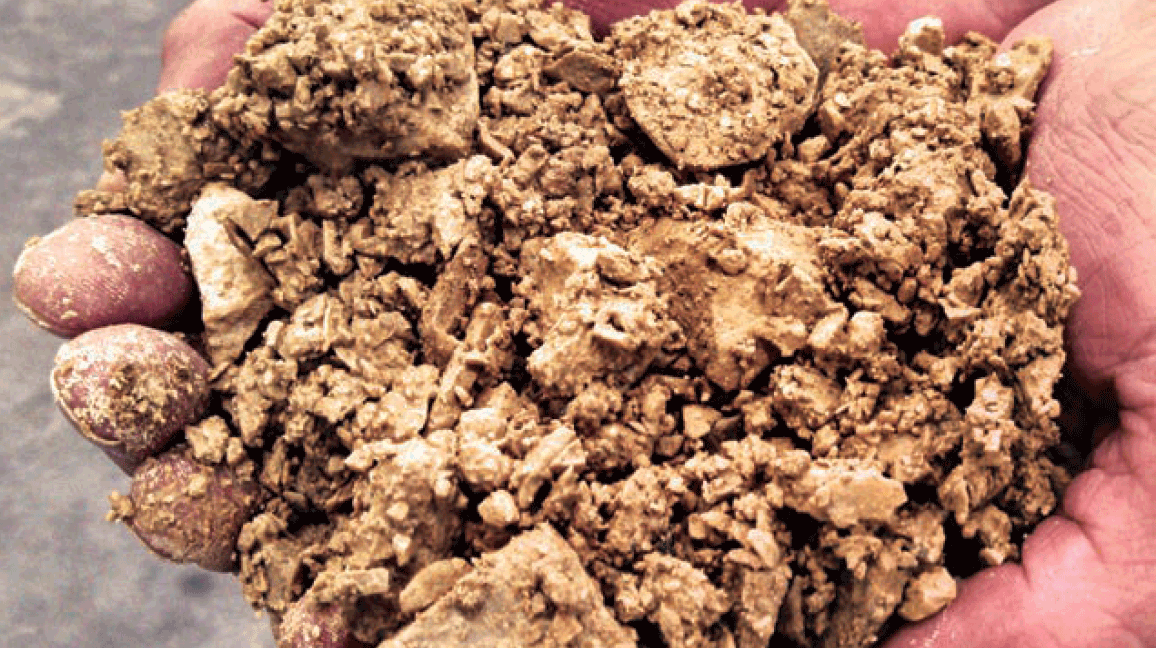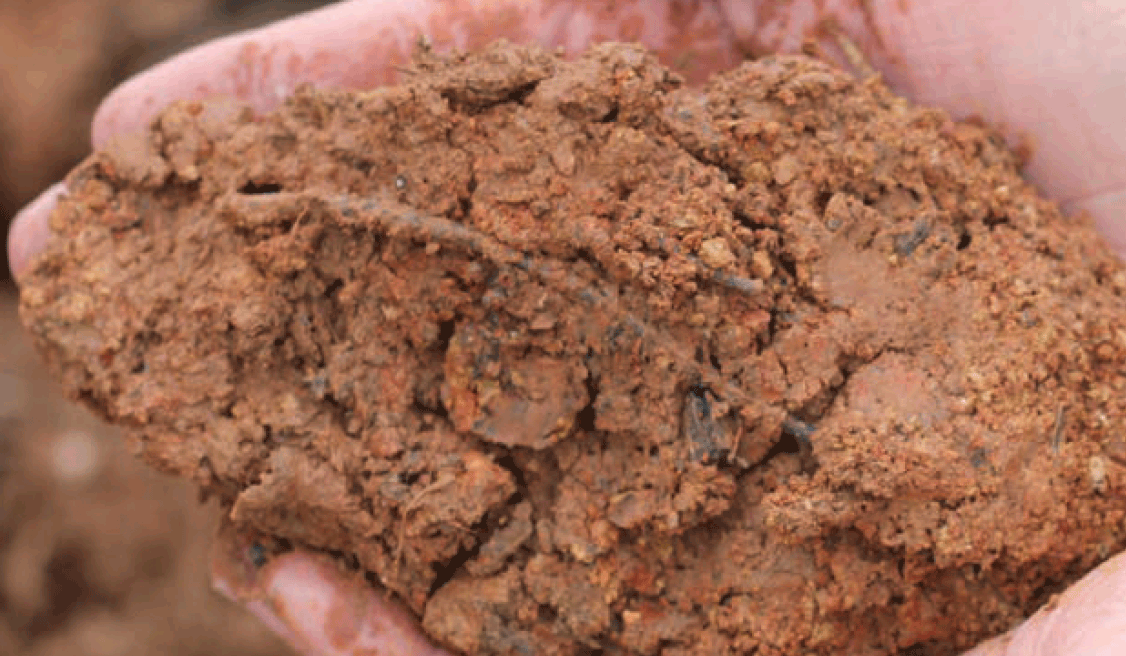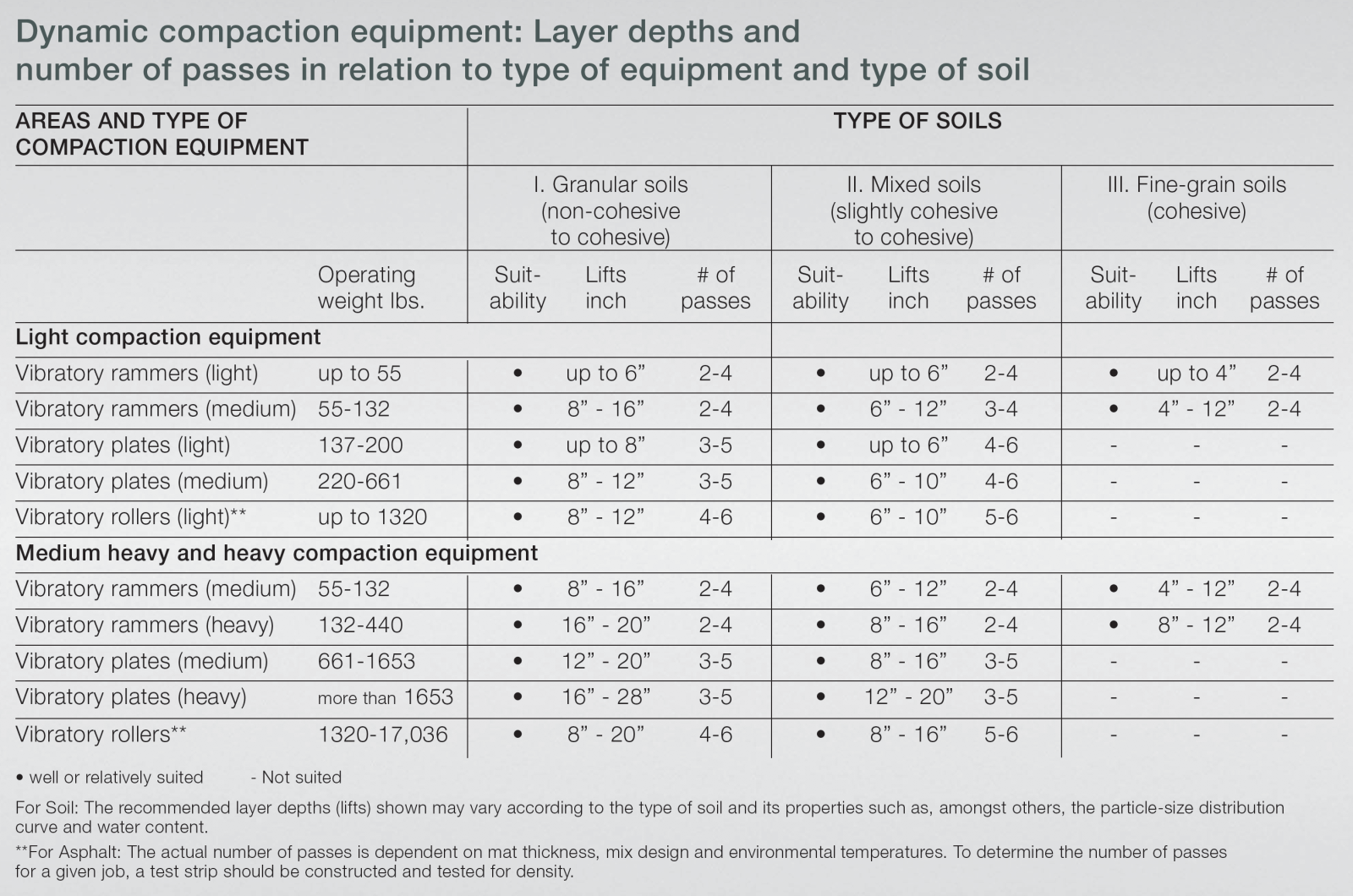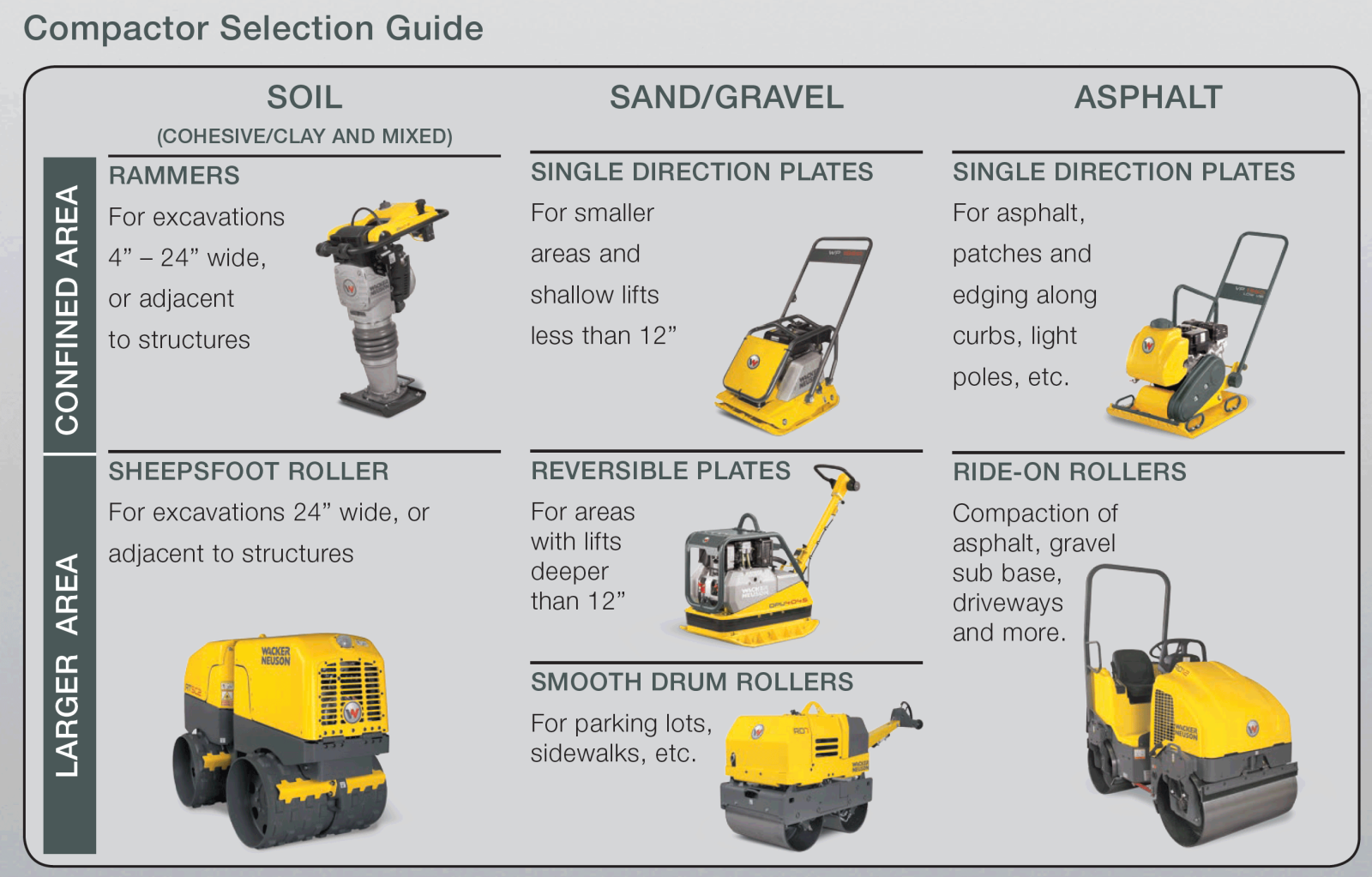Wacker Compaction Equip Guide

Soil and Asphalt Compaction Equipment Selection Guide
What factors influence the selection of soil and asphalt compaction equipment?
A series of factors must be taken into consideration such as type of soil, particle size distribution, moisture, and required final density of the soil or asphalt. The evaluation of the mentioned factors is done mainly for two reasons:
1. To determine which type of machine is most suitable for the job.
2. To determine which piece of equipment achieves the required results in the most economical way.
The basic distinction that should be made when choosing compaction equipment: Will the machine be used on asphalt, granular, or cohesive soils?
Granular Soils

Granular soils are compacted best through vibratory plates and rollers. Granular soils by their name are very grainy in structure. Because of their coarse nature, it is the friction between individual particles that holds the material in place. Granular soils also range from uniform materials that contain only one particle size to well graded soils that have a large variety of particle sizes. These materials will result in soils of greater strength as there are medium and smaller particles that fill in the voids between the larger ones and result in a dense material of great load bearing capacity. The most efficient method to compact granular soils is to apply vibratory energy to the material.
These vibrational impulses will penetrate the soil and create movement between the soil particles. When vibration is applied to granular material, as the particles vibrate, they will actually begin to rotate in the same direction that the exciter in the machine is rotating. This makes the particles turn and tumble, and after the machine passes over them, gravity will cause the particles to settle into a denser configuration.
TAKE NOTE: When choosing compaction equipment for use on granular to semi-cohesive soils always consider a vibratory plate or smooth drum vibratory roller.
Cohesive Soils

For compaction of cohesive soil (clay), impact or shearing forces are required in the form of vibratory rammers or sheepsfoot rollers to obtain proper compaction. Clay particles (cohesive soils) are actually made up of tiny “pancake like” platelets that layer upon each other. The gaps between them can either be filled in with air or with water. The molecular bonding between the plates holds them in position.
Impact force is required to release trapped air and excess moisture from cohesive soil. Because of the nature of cohesive soils, machines like rammers produce an impact or shearing type of force required for compaction. The high shoe stroke combined with a high frequency create a great amount of shearing force at the front of the shoe to break down the molecular bonds and allow the soil to compact. Sheepsfoot rollers create shearing forces in the soil due to the cleats found on the surface of the drum. As the drums rotate, the edges of the cleats entering the soil will cut or shear the soil, breaking down the molecular bonds between adjacent soil particles.
TAKE NOTE: When choosing compaction equipment for use on semi-cohesive to highly cohesive soils always select a rammer or a vibratory roller sheepsfoot drums.
Asphalt
Various types of compaction equipment are used for compacting asphalt. Vibratory plates are used in confined areas and patching jobs, but vibratory rollers are by far the most widely used piece of equipment for asphalt compaction. Rolling asphalt typically consists of three consecutive phases: breakdown or initial rolling, intermediate rolling, and finish rolling. Breakdown rolling obtains practically all of the needed density. Intermediate rolling densifies and seals the surface. Finish rolling removes roller marks and other blemishes left from previous rolling. Vibratory compaction relies on sending high frequency centrifugal force blows radiating downward through the asphalt-aggregate mix. When those forces hit a stable base structure, they “bounce” back and shake the material from the bottom up. This is the key concept in the vibratory principle - compaction actually starts at the bottom and works its way back to the surface.
The next time you are purchasing compaction equipment, remember the type of soil will determine the type of machine you will need.
1. Granular Soil – Vibratory plate or smooth drum roller
2. Cohesive Soil – Vibratory rammer or sheepsfoot roller
3. Asphalt – Vibratory plate or smooth drum roller





